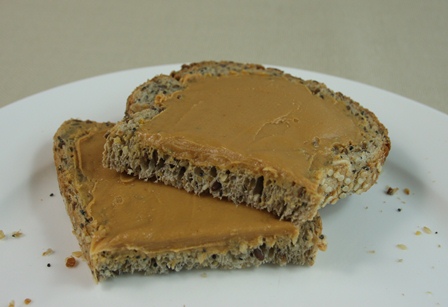7 healthy alternatives to spread on your daily bread

Olive oil for dipping? Avocado, hummus or peanut butter? The debate rages as to what’s the healthiest spread for your daily (wholegrain) bread. Here’s my 7 healthiest alternatives to butter and margarine depending if you want sweet or savoury options or just want to grab something quick.
1. Avocado
Healthy, natural and good for you. This is one of my favs spread on crunchy grain toast with tomato, cucumber, chicken and rocket. Avocado is rich in monounsaturated fat – the same heart-friendly fat as in olive oil and macadamias – with little of the 'bad' saturated fat. At 22 per cent total fat, it's way lower than butter (80 per fat), margarine and most light variants so you can afford to spread it on thickly. I buy a small avocado if it's just for me or a large one if there's more to feed.
2. Hummus
Another healthy option. And practical as it can do double duty as a dip. Made from tahini (sesame seed paste), chick peas, lemon, garlic and salt, hummus has 15 to 20 per cent fat, a little less than avocado, but with the same benefit of it being low in saturated fat. Now that supermarkets sell tubs of it, it's easy to keep in the fridge. Use with cold lamb or on toast wedges of flatbread or crackers with a drink.
3. Olive oil
A Mediterranean favourite, cold pressed extra virgin olive oil is high in monounsaturated fat and contributes to the long-life that the Mediterranean foodies are renowned for! Drizzled on toast or used for dunking, it adds its fresh zesty flavour that beats the taste of margarine or butter – perfect with your morning eggs and tomato. Or try tossing tomatoes, fresh torn basil and pepper through a drizzle of olive oil and heap on fresh grainy bread or toasted rye sourdough.
4. Cottage cheese
A spreadable skim milk curd, cottage cheese is a great option for kids with its mild taste and interesting soft consistency. Spread on toast, crispbread or crackers. Go for the low-fat version and you'll be loving it with approximately 2 per cent fat!
5. Ricotta
Italian for 'twice-cooked', ricotta is similar to cottage cheese but is smoother in texture with no added salt. It can be a by-product of cheese (made from the whey leftover from other cheeses) or it can be made with cow's milk whey. Not only spreadable, ricotta can be used in baking, sweet or savoury, and in pasta dishes like lasagne. Try ricotta spread thickly on scones or toast topped with jam or honey.
6. Peanut butter

No added salt types taste fine – there's enough gutsy flavour from the peanuts so you won't miss the salt. Light peanut butter has approximately 30% less fat and saturated fat but usually has added sugar. I would prefer to use regular peanut butter - and spread it thinly - than to have peanuts with added sugar on my toast!
7. Light cream cheese
At 14 per cent fat, light cream cheese (Philly) offers you a nice soured-flavour change with around one-third less fat than the full-fat version.
How much fat is in these spreads?
Saturated and total fat content per 100 grams compared to butter and margarine listed at the end:
|
Spread |
Saturated Fat |
Total Fat |
| Avocado | 5 | 22 |
| Hummus | 2 | 17 |
| Olive oil | 15 | 100 |
| Ricotta, original | 7 | 9 |
| Ricotta, reduced fat | 4 | 5 |
| Peanut butter, regular | 11 | 52 |
| Peanut butter, light (Kraft) | 8 | 38 |
| Cottage cheese | 4 | 6 |
| Cream cheese, Philadelphia regular | 18 | 26 |
| Cream cheese, Philadelphia light | 10 | 14 |
| Butter, regular, Devondale | 55 | 81 |
| Canola margarine, regular Gold'n Canola | 16 | 65 |
Butter or margarine?
That's a whole other debate in itself. See here for the whole story.








